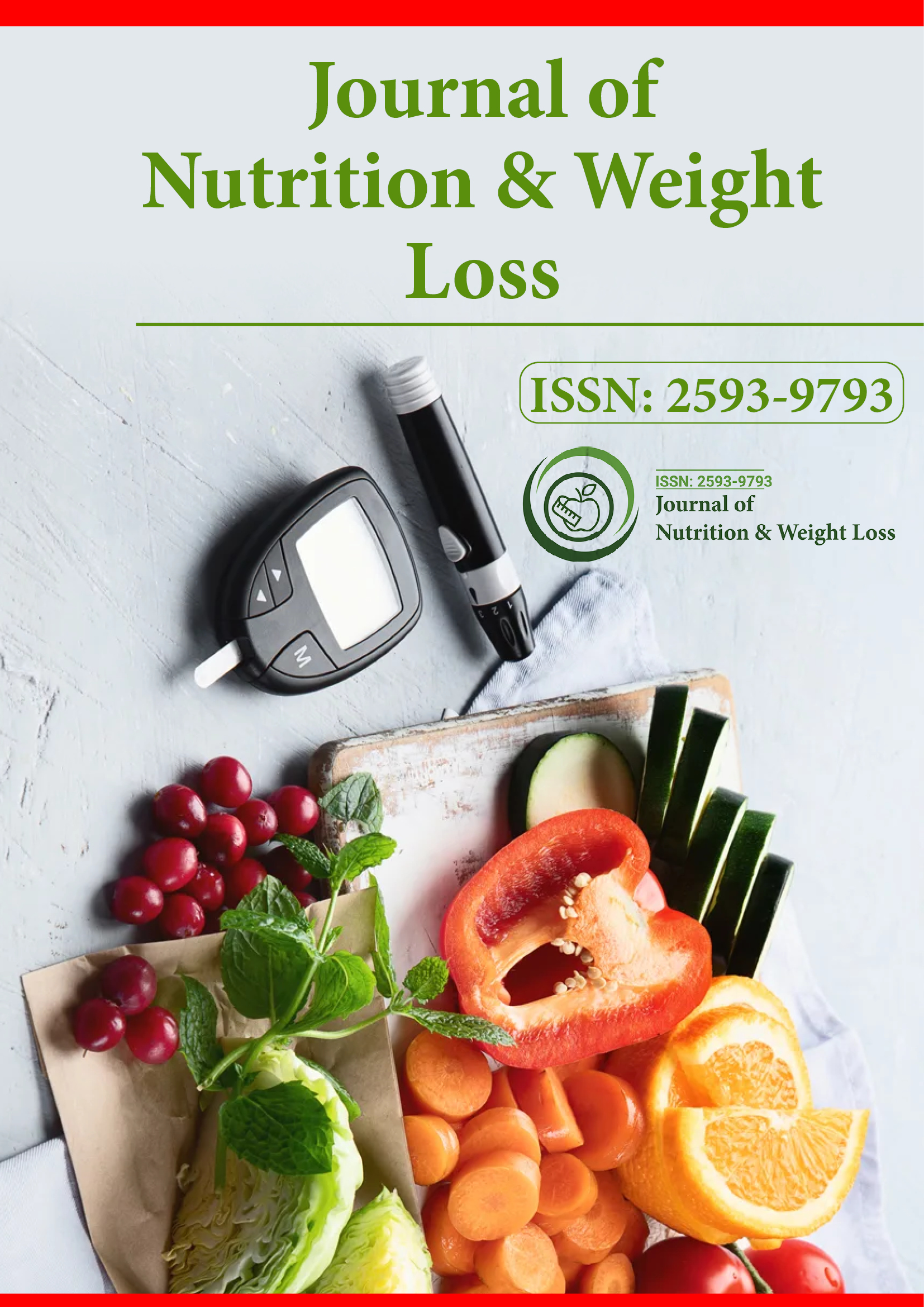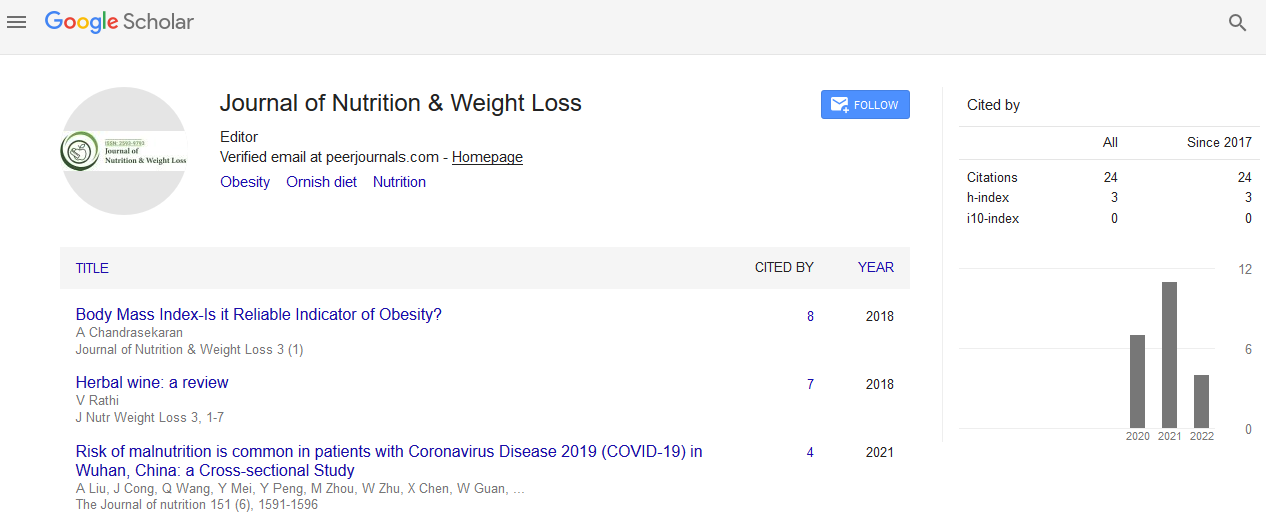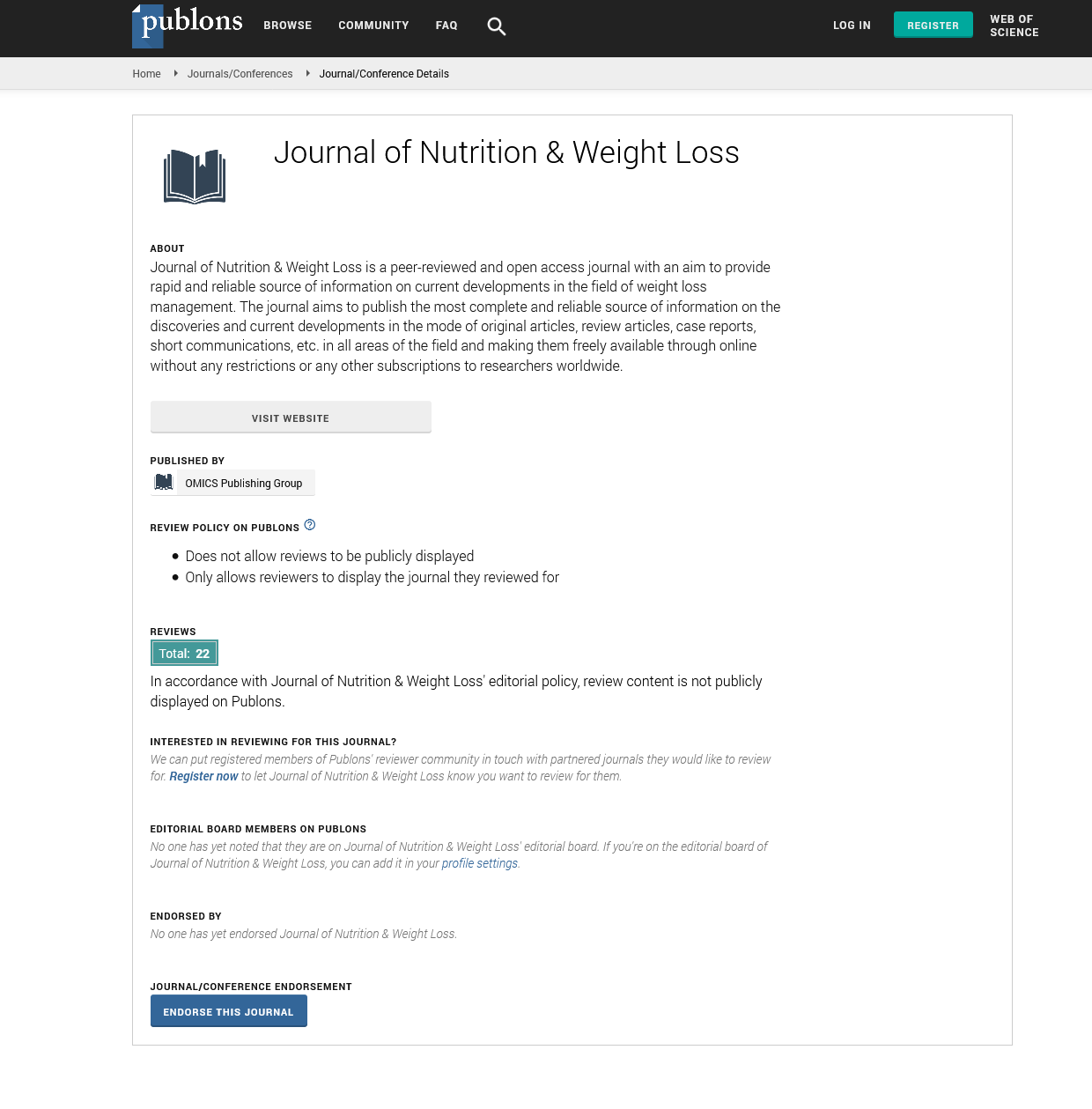Indexed In
- RefSeek
- Hamdard University
- EBSCO A-Z
- Publons
- Euro Pub
- Google Scholar
Useful Links
Share This Page
Journal Flyer

Open Access Journals
- Agri and Aquaculture
- Biochemistry
- Bioinformatics & Systems Biology
- Business & Management
- Chemistry
- Clinical Sciences
- Engineering
- Food & Nutrition
- General Science
- Genetics & Molecular Biology
- Immunology & Microbiology
- Medical Sciences
- Neuroscience & Psychology
- Nursing & Health Care
- Pharmaceutical Sciences
Abstract
The Science and Art of Obesity
Introduction: There have been so many advances in the field of Obesity. It is the objective of this article to introduce to other health professionals about the latest in science regarding obesity knowledge as well as give them a glimpse on the art of obesity management. At the same time, this article intends to update those in the field of nutrition and weight loss on the current accepted definitions, different classifications, health risk factors, causality in anatomy as well as physiology of fat hormones or adipokines, and review step-by-step the universally accepted 5 A’s in treating overweight patients suffering from obesity.
Methodology: Obesity information was broken down into science and art. The science deals with exact knowledge that have been established by discoveries thru the years while the art deals with different ways by which obesity is classified and eventually managed.
Results: The science of obesity knowledge deals with the anatomy and physiology of fat hormones (adipokines) including the type of fat that they originate from (visceral, subcutaneous, superficial, and deep) as well as differentiate those that are beneficial from detrimental. The art of obesity management deals with the processes of weight loss, weight maintenance, weight regain, recidivism, and rebound phenomenon. Obesity is differentiated from adiposity and their different classifications based on the body mass index are reviewed, including how different countries use them and its history in the icd. Culmination is the 5 a’s in obesity management with concrete examples.
Conclusion: Adipokines originate from fat cells after tissue macrophages devour them when they get too large or too many. Those that originate from visceral fat, deep fat, and upper obesity tend to be detrimental while those that originate from subcutaneous fat, superficial fat, and lower obesity tend to be beneficial. Weight loss needs to be maintained for a year for it to be considered successful with long term sustainability. Obesity is having excess body fat all over that it already increases risk of disease based on health risk factors which is a combination of having a bmi>30 kg/m2 and a large waist circumference based on gender and different step-up cut-offs. The 5 a’s in obesity are ask, assess, advise, agree, and assist.


